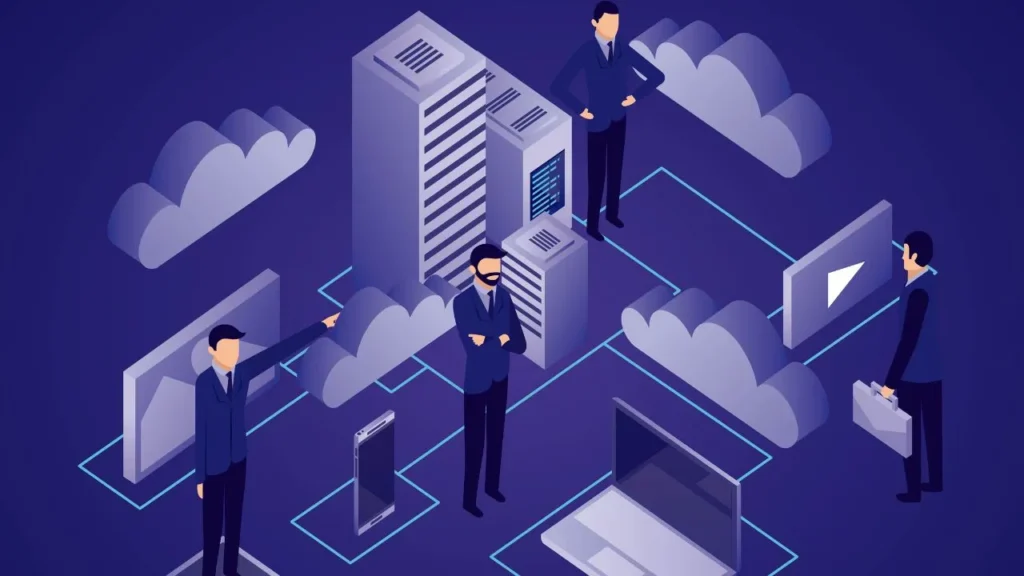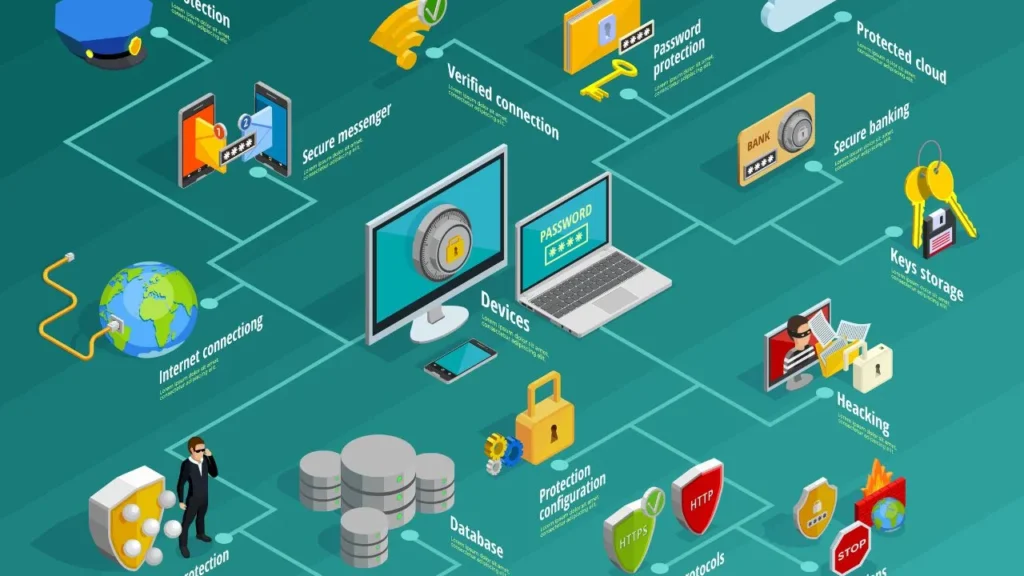how to prevent data loss in cloud computing
A business can suffer significant harm from data loss. It erodes consumer confidence in your brand and may result in financial losses from legal action, penalties for breaking the law, and intellectual property theft. Cloud Computing.
The goal of data loss prevention, or DLP, is to stop data leaks caused by abuse, both deliberate and inadvertent. Encryption, detection, precautionary steps, instructional pop-ups, and even machine learning to discover weaknesses are some of these techniques and technologies.
DLP is becoming an essential component of data protection. The DLP industry is not new, but it has expanded to include cloud capabilities, managed services, and improved threat prevention. The usage of DLP to safeguard data against malicious assaults has increased dramatically as a result of all of this, along with the amount of data breaches that are increasing.
While cloud security is a broad issue that can mean various things to different businesses, the cloud can help with DLP. Cloud security is the method by which a company uses cloud services to integrate cybersecurity into its business operations and technology. One of the main objectives when managing risks with cloud storage is preventing cloud data loss.
Cloud DLP solutions guard sensitive or vital data for a company from insider threats, cyberattacks, and unintentional disclosure.
What is Data Loss Prevention in Cloud Computing?
In cloud computing, Data Loss Prevention (DLP) serves as a security measure aimed at preventing unauthorized access, sharing, or loss of private data. It serves as a watchful endpoint guardian, guaranteeing the safety of vital information inside an organization and guarding against breaches or data leaks.
DLP techniques allow security teams to find and track data flows across several channels, including mobile devices and applications, by utilizing strong functionality and firewalls.

Enterprise data is safeguarded via DLP, which also covers cloud and on-premises services. It is an essential safeguard against exfiltration efforts and ransomware, compliant with laws like the General Data Protection Regulations (GDPR).
Cloud DLP solutions, which are frequently provided by companies such as Microsoft, support cybersecurity protocols and guarantee data confidentiality and compliance. They provide seminars that teach businesses how to put DLP principles into practice while highlighting how crucial it is to secure sensitive data in cloud and SaaS applications.
The Benefits of Using the Cloud for Data Loss Prevention
Employees may work remotely and access data from any location thanks to cloud ecosystems. While cloud computing helps increase productivity, there’s always a chance that workers may utilize shadow IT, or unauthorized Cloud Computing programs and storage. Employers must provide their staff access to verified cloud services in order to safeguard sensitive data on their networks.
You require cloud DLP if your company uses software-as-a-service apps for communication or data storage. There are several benefits to using DLP in the cloud as opposed to perimeter-based security. DLP solutions assist in putting policies in place that stop and lessen the hazards connected to shadow IT.
DLP in the cloud offers further advantages as well:
Secure Integration
Secure connection with cloud storage providers may be ensured with the use of DLP. This process entails examining the controls of servers, locating sensitive data, and encrypting it before sharing the content on the cloud.
Thanks to its deep integration via an Application Programming Interface (API) with cloud apps like G Suite and Office 365, it becomes a near-native security component of your team’s apps.
Continuous Scanning and Auditing
The capacity to audit current data and categorize it into pre-established protection and sensitivity categories is another advantage. DLP enables businesses to conduct regular audits and scans of data stored in cloud storage, including uploaded files.
Automated Policies
DLP systems provide the capability to automate business rules that enforce controls on sensitive data. Users may encounter restrictions on certain actions or receive warnings. Additionally, tools can automatically encrypt sensitive data before it is transported or stored.
Instant Alerting
Sensitive data exposure is a possibility due to a variety of factors, including ignorance, inadvertent human activities, system malfunctions, and more sophisticated criminal behavior. DLP systems include built-in alarms, allowing administrators and stakeholders to be promptly notified in the event of data compromise.
Maintaining Visibility
Users are able to get around gateway security measures. when they connect directly to the cloud and unplug from their networks. This can lead to a security lapse that lets important information pass through their network.
The majority of DLP products include features that guarantee visibility and control in cloud environments. Organizations need these controls in order to abide by laws pertaining to data privacy and protection.
Regulatory Compliance
You must put safeguards in place to keep unauthorized individuals from accessing sensitive information on your network in accordance with a number of data protection laws. Among these are the General Data Protection Regulations (GDPR) of the European Union, the Health Insurance Portability and Accountability Act (HIPAA), and the Payment Card Industry Data Security Standards (PCI DSS).
You may simplify your data security efforts and regulatory compliance by utilizing the cloud for DLP.
Challenges of Cloud Computing Data Protection
Organizations must overcome several obstacles in the cloud data security landscape to provide strong protection and compliance.

This is a thorough examination of the difficulties associate with cloud data protection:
- Compliance and Regulatory Alignment: It can be difficult and complex to meet different compliance standards across a variety of cloud systems.
- Data Visibility and Control: It can be challenging to monitor and manage sensitive data scattered across multiple cloud platforms.
- Risks Associated with Data Breach: Preventing illegal access and data breaches in the face of changing cyber threats is still a major problem.
- Access management and encryption: It might be challenging to implement uniform access restrictions and encryption techniques across various cloud services.
- Vendor Dependency and Shared Responsibility: Comprehending cloud service providers’ shared responsibility model and guaranteeing thorough data protection present difficulties.
Best Practices for Cloud Data Loss Prevention (DLP)
A number of strategies might enhance your cloud deployment and DLP initiatives. Following these best practices will ensure that you take all necessary steps to avoid data loss in the cloud.
Prioritize Data
Data are not all created equal. As a result, we may take distinct approaches to prevent data loss for every kind of data and file in the cloud. Ascertain which information would be most problematic to steal and which information an attacker is most likely to target.
Classify Sensitive Data
Additionally, group sensitive information under labels like “sensitive,” “private,” “important,” and “confidential.” Credit card information, Social Security numbers, and other Personally Identifiable Information (PII) are subject to pre-configured restrictions.
To make it easier for administrators to find and assess batches of data for appropriate security measures, cloud DLP policies categorize data.
Monitor Data in Motion
Organizations should monitor data in motion between internal users and external third parties. This will assist the company in comprehending the handling of sensitive data and determining the extent of any problems that the cloud-based DLP strategy needs to solve.
Communicate and Develop Controls
Controls will first focus on typical actions that appear to be somewhat intuitive. With the evolution of the cloud DLP program, organizations may limit advanced dangers by implementing more precise controls. With Cloud-Access Security Brokers (CASBs), you may combine context and content (data categorization) to implement more precise limitations.
Train Your Employees
By educating people on security procedures and typical social engineering con games, such as phishing attempts, you may lessen the loss of insider information. Workers frequently need to be made aware that their actions may cause data loss. They will make better judgments on their own if they are well-informed.
ZenGRC Helps Businesses Protect Sensitive Information
To control risks in the short term and implement risk management processes to meet developing threats over time, you must enlist the aid of a cloud solution for data loss prevention.
ZenGRC is a compliance, risk management, and governance tool that helps your program for cloud security. Automate document processes to get rid of time-consuming chores and the tracking needed to make sure that essential actions are completed.
With its templates and audit management capabilities, ZenGRC can simplify compliance procedures for a variety of frameworks, including GDPR, HIPAA, and PCI DSS. Identify your gaps and determine what has to be done to close them using real-time dashboards and insightful reporting.

